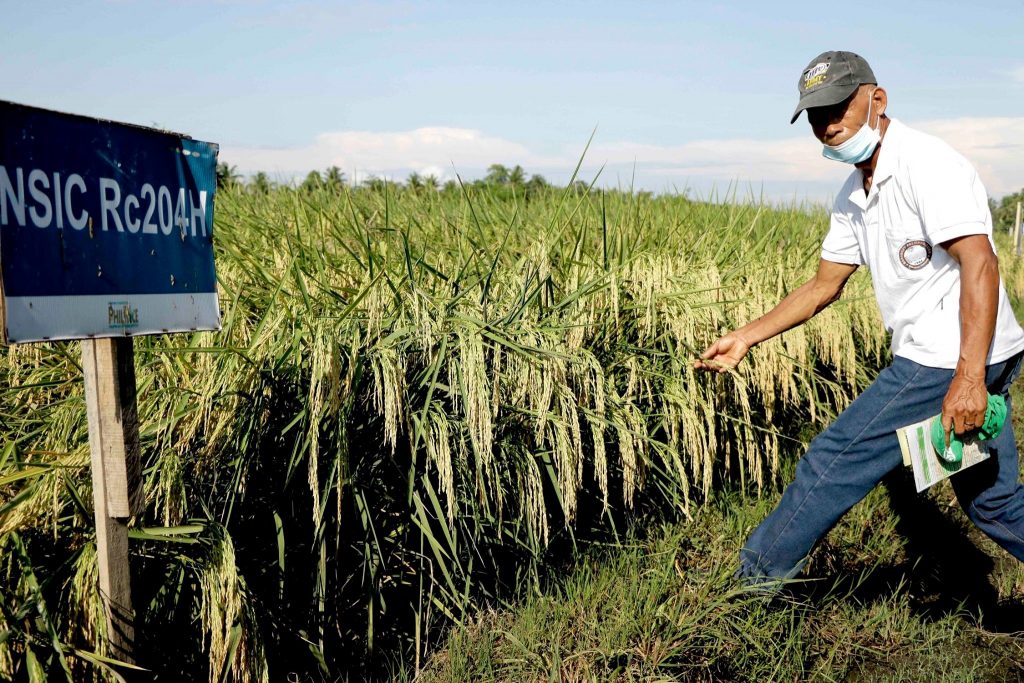
On Sep.1, the Regional Rice Technology Forum and Hybrid Rice Techno-Demo Harvest Festival highlighted the vigor of 14 hybrids under the agro-climatic conditions in Region 12’s Cotabato and Sultan Kudarat provinces.
The 14 hybrid rice varieties featured during the event at the Midsayap station were PHB 79, Bigante, Habilis, SL-8H, SL-12H, SL-19H, Hyvar, US88, TH 82, Batari, Longping 534 and 2096, Mestiso 20, and Kimbee.
Farmers from Buenavista, Quezon also showcased the public hybrid Mestiso 20 during the Farmer’s Field Day last Oct. 15. The hybrid rice were produced by the farmers during the seed production trial last DS2020.
Unlike inbred rice varieties, hybrids have longer and thicker root system, bigger and heavier panicles, faster growth rate, and higher vigor that allow them to produce higher yields.
During another event, 36 accredited rice seed growers from Cagayan also learned how to sample R-line (male palay) and A-line (female palay) to understand the state of panicle development and flowering stage of both mature parental lines. These lines are parents of F1 hybrid seeds like Mestizo 1.
Meanwhile, the Season-Long Training on F1 Hybrid Rice Commercialization officially started in Barangay Bacsay, Luna, Apayao with 30 inbred and hybrid rice farmers in attendance on September 21.
The training focuses on producing commercial Mestizo 1 and Mestiso 20 varieties with emphasis on land preparation, pest infestation, water and nutrient management, and harvesting.
Isabela station leads the training in cooperation with municipal and city agriculture offices, and local government officials in implementing Rice Development Initiatives for Cagayan Valley and CAR Environments.




